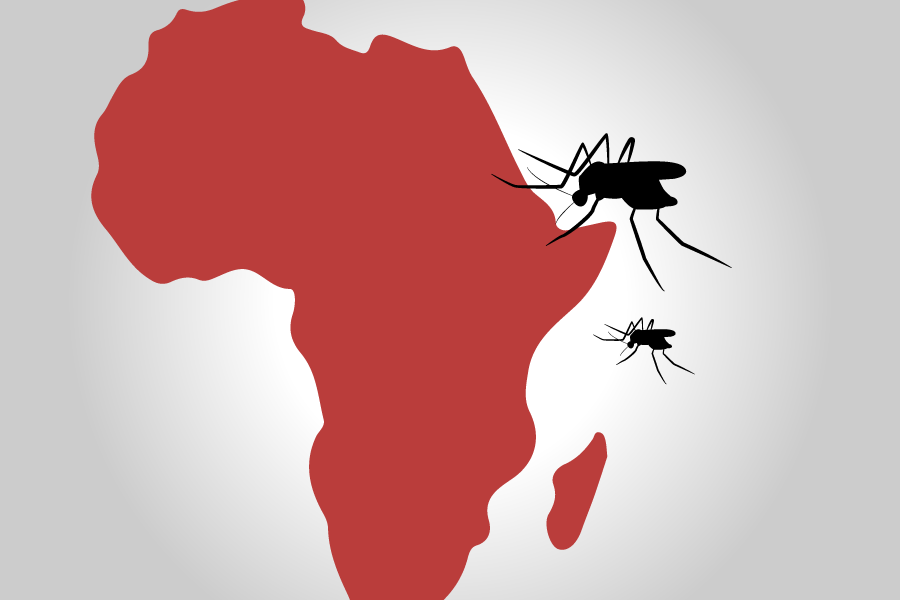
Scientists hope to control spread of illness with genetically modified mosquitoes resistant to malaria parasite, use of CRISPR/Cas9 gene-editing tool
Malaria is responsible for about half a million deaths every year. The Center for Disease Control (CDC) currently reports that 3.2 billion people inhabit areas at risk of malaria transmission. The prevalence of this mosquito-borne disease in Africa costs at least $12 billion per year for treatment, reinforcing high poverty rates.
UC Davis vector biologist Greg Lanzaro and research teams have joined the initiative to fight malaria in Africa. Utilizing an innovative approach — the genetic modification of mosquitoes in order to disrupt transmission of the disease — provides a promising tactic to potentially eliminate the disease.
“I think it is important to understand that in regions of the world [which are] most heavily impacted by this devastating disease that it imposes a burden on individuals and society as a whole of enormous magnitude, similar in may respects, to that imposed by cancer on citizens of the developed world,” said Ethan Bier, a professor of cell and developmental biology at UC San Diego.
Malaria is spread by the bite of a female Anopheles mosquito. Symptoms of the disease include fever, chills and flu-like illness. Without treatment, it may cause serious health complications and eventually death.
“It is estimated a child dies in Africa from this illness every minute,” Lanzaro said.
UC Davis is collaborating with the original UC Irvine Malaria Initiative project, directed by UC Irvine vector biologist Anthony James. This project has extended throughout the UC system, including participation from experts of various disciplines such as molecular biology, entomology and public health.
Lanzaro and the UC Davis research team will be identifying field sites for trials to measure how effective the genetically-modified mosquito is in reducing malaria transmission.
“It is going to take four years until a field trial and release,” Lanzaro said. “Then it will take another two to four years to just document what is happening because we want to make sure there are not unanticipated variables occurring.”
Some criteria used to determine ideal field sites for trial include finding a genetically isolated population of mosquitoes so the experiment does not accidently spread geographically, consists of existing regulatory structure and local scientists with whom to collaborate.
“The best candidate […] is an island, but it must first be determined [that] those mosquitoes are genetically isolated on the island from those on the mainland in order to spatially contain the tests,” Lanzaro said.
The goal of releasing the mosquitoes with a synthetic genetic element, preventing progeny from becoming affected by the malaria parasite, is to cause this gene to sweep through the population.
“If we see there is a reduction in malaria cases where we choose to release the mosquitoes, we need to make sure that the impact is the result of our science and not something else,” Lanzaro said.
The most vulnerable groups of this disease are young children, because their immune systems are not yet fully developed. In addition, pregnant women are also at high risk of malaria because of decreased immunity.
“The ultimate impact [of the project] will be an epidemiological one, reduced morbidity and mortality,” James said.
Malaria is a disease that has been known for thousands of years, with records of the ancient Greeks describing its symptoms. Despite its prevalence over a long time, it still is a major global health problem.
Current mosquito reduction measures include insecticide-treated nets, which have reduced malaria infections and mortality. However, such efforts have not achieved eradication of the illness.
Because the biology behind the disease is very complicated and also involves a mosquito host, a multidisciplinary effort is needed to help reduce negative health impacts.
“[With] using modern molecular methodologies, people are a bit uneasy since it brings in ethical, social and legal components,” Lanzaro said.
The first genetically modified mosquito model was created in James’ laboratory back in 1998, alongside the development of artificial genes resistant to malaria based on antibodies that prevent mosquitoes from transmitting the actual parasites that cause the disease.
The synthetic genes were inserted into mosquitoes via a genome editing method called CRISPR/Cas9. Essentially, Cas9 acts as a pair of scissors to cut or snip a specific target on DNA so pieces of DNA can be added or removed.
Laboratory studies proved the antimalarial trait was successfully passed down to 99 percent of the progeny, confirming its effectiveness. In order to determine if this method truly works, it must be tested outside of a laboratory to address any confounding variables.
“It is very important to listen to how people are thinking about gene-drive technology in those areas where malaria is endemic and not to rely solely on thinking from the developed world,” Bier said.
Further information about malaria and its impacts globally can be found on the CDC website.
Students on campus interested in getting involved in helping those affected by the illness by joining clubs and organizations that fundraise for relief and spread awareness about its impact. Such clubs include American Red Cross Club, Global Health Brigades and Public Health Club.
“There are a lot of opportunities for students interested in global health in general and I hope they get involved sooner rather than later,” Lanzaro said. “Other mosquito-borne diseases needed to be studied too like Zika and Dengue, which can greatly affect human health.”
Written by: Shivani Kamal — science@theaggie.org


